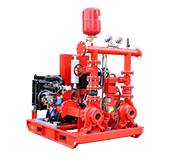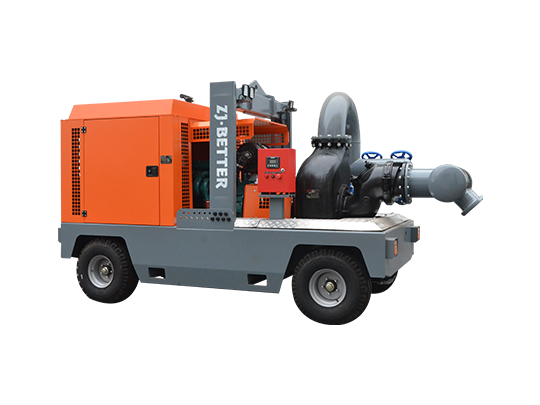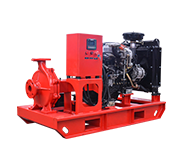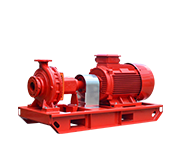1.Water supply: The fire pump receives water from a dedicated water source such as a water storage tank, a well, or a public water supply. The water may also come from an external source like a river or a lake.
2.Priming: The pump needs to be primed before it can operate effectively. Priming involves removing air from the pump and the suction pipe to create a vacuum that allows water to flow into the pump. Some fire pumps are self-priming, while others may require manual priming.
3.Intake and impeller: The fire pump has an intake or suction pipe that draws water from the water source. The water enters the pump through the intake and flows into the impeller, which is a rotating component with vanes or blades.
4.Centrifugal force: The impeller rotates rapidly, creating centrifugal force. This force causes the water to move outward and away from the center of the impeller, increasing its kinetic energy and pressure.
.jpg)
5.Discharge: The pressurized water exits the impeller and is discharged through the pump's outlet or discharge pipe. The discharge pipe is connected to the fire protection system, such as fire sprinklers, hoses, or hydrants, to distribute the water where it is needed.
6.Pressure control: Fire pumps are equipped with pressure control devices, such as pressure relief valves or pressure governors, to maintain a consistent and controlled water pressure. These devices prevent the pressure from exceeding safe levels and protect the system from damage.
7.Power source: The fire pump can be powered by different energy sources, depending on the specific installation. It can be driven by an electric motor, a diesel engine, or even a steam turbine, depending on the requirements and availability of power.
8.Monitoring and control: Fire pumps often have monitoring and control systems to ensure their proper operation. These systems can include pressure gauges, flow meters, temperature sensors, and alarms that provide feedback and alerts to operators or fire control panels.
Overall, the fire pump's primary function is to deliver a reliable and continuous supply of water or foam at the required pressure to effectively combat fires and protect life and property.






